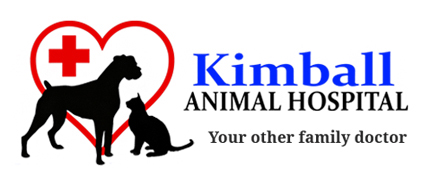Library
-
Congestive heart failure (CHF) refers to the heart's inability to pump adequate blood to the body. There are many causes of CHF in dogs. The two most common causes are mitral valve insufficiency (MVI), or a leaky mitral valve, and dilated cardiomyopathy (DCM). The most common clinical sign of CHF is persistent coughing accompanied by difficulty breathing. Other signs include coughing when at rest or sleeping, an increased resting respiratory rate or excessive panting, persistent loss of appetite, a swollen belly, and pale or bluish gums.
-
Conjunctivitis means inflammation of the conjunctiva. If you see excessive tearing from one or both eyes, abnormal discharge, and reddened conjunctival membranes, your cat may have conjunctivitis. The most common causes of conjunctivitis include infectious diseases and non-infectious conditions, including allergies, injuries, hereditary conditions, and tumors. The approach to non-specific conjunctivitis is to use eye medications containing a combination of broad-spectrum antibiotics to control the bacterial infection and anti-inflammatory drugs to reduce the inflammation. The prognosis depends on the specific diagnosis. It can be a recurring condition in some cats.
-
The conjunctiva is the lining tissue that covers the globe of the eye and lines the eyelids and the third eyelid. Conjunctivitis refers to inflammation of this tissue. The most common clinical signs of conjunctivitis include discharge from the eyes, squinting or excessive blinking, and redness or swelling around the eyes. Conjunctivitis often involves both eyes, but only one eye may be affected in certain conditions. The most common causes of conjunctivitis include bacterial and viral infections, allergies, hereditary conditions, and tumors. The main goal of diagnosis is to determine if the conjunctivitis is a primary or secondary problem, if there is additional disease or damage to the eye, if the condition is allergic, or if it involves the sclera. In order to differentiate many of these conditions, a complete and detailed ophthalmic examination must be performed. Treatment is directed at the specific cause and may include both topical and oral medications. Most dogs have an excellent prognosis in most cases of conjunctivitis.
-
Cats were once considered solitary creatures. We now know that they are, in fact, social animals who benefit from interaction with their own and other species. However, not all cats are social with other cats. The personality of each cat must factor into the decision to introduce a new cat to your home.
-
Constipation is defined as an abnormal accumulation of feces in the colon resulting in difficult bowel movements. Constipation is a condition seen most commonly in mature, middle-aged cats and can be caused by hairballs, ingestion of foreign bodies, pelvic injuries, or obesity and/or lack of exercise. Megacolon is the most common cause of constipation in cats. In most cases, a diagnosis of constipation can be made on the basis of the cat's clinical signs and medical history. Treatment varies depending on the cause of constipation. The long-term outlook varies according to the cause of the constipation; however, most cats can be adequately managed without surgery and resume normal, healthy lives.
-
Constipation is infrequent or difficult passage of stool or feces and is typically a temporary condition. Though there are many causes of constipation in dogs, most cases are caused by ingestion of irritating or indigestible substances. Constipation is usually diagnosed through a physical examination and medical history. A rectal exam to rule out rectal strictures, tumors, foreign bodies, or other abnormalities may be done. Abdominal radiographs, blood tests, and urinalysis are valuable for a full diagnosis and development of a treatment plan. Biopsies may also be recommended if a rectal mass or stricture is suspected. Most cases of constipation are relatively easy to treat through the use of manual removal, enemas, and medications. The prognosis for constipation is determined by the exact cause.
-
A Coombs’ test is used to test for a disease called autoimmune hemolytic anemia (IMHA). IMHA is a condition where the immune system breaks down or destroys red blood cells, leading to anemia. The test detects the presence of immunoglobulins (antibodies) on the surface of red blood cells. Taken together, the physical findings and the laboratory data (such as a Coombs’ test) may suggest that immune-mediated destruction of red blood cells is the most likely cause of your pet's anemia.
-
Coonhound paralysis is a sudden inflammation of multiple nerve roots and peripheral nerves in dogs, and occasionally cats. It can be caused by an immune reaction to raccoon saliva. It can also occur in dogs who have not encountered a raccoon. In this case, it is called acute idiopathic polyradiculoneuritis, and its cause is often unknown. Dogs with coonhound paralysis start out with a stiff-legged gait that rapidly progresses to paralysis of all four legs. Good nursing care is essential for recovery.
-
Corkscrew tail, also known as screw tail or ingrown tail, is a vertebral malformation that commonly occurs in certain dog breeds. Corkscrew tail is commonly observed in English Bulldogs, Pugs, Boston Terriers, and French Bulldogs, although it may also occur in other breeds. Corkscrew tail is an inherited condition. There is nothing that you can do to prevent your dog from developing corkscrew tail, but there are measures breeders can take to reduce the incidence of corkscrew tail in their litters.
-
Corneal dystrophy is a term used to describe several conditions that occur in dogs and cause the corneas to become opaque. There are three major categories of corneal dystrophy: epithelial, stromal, and endothelial. Each is named by the anatomic location of the abnormal tissue and opacity.

